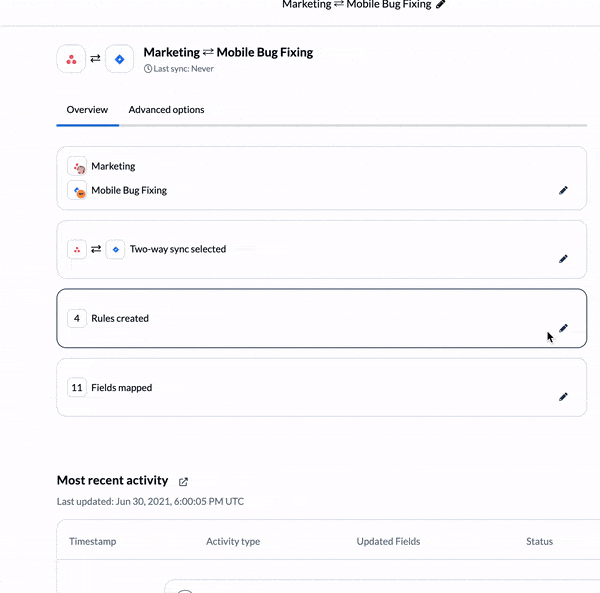Break Developers Out of Their Silos With Unito’s 2-Way Asana-Jira Integration
Maybe more than any other team, developers and their leaders need purpose-built tools. Jira is often a tool of choice for software teams, but just because they love it doesn’t mean the rest of the organization does. What do you do when some teams use Jira, others use Asana, and there is no middle ground? You use Unito.
Unito is a workflow management solution that empowers teams to work from where they’re most comfortable. It helps leaders get the most out of the tools they’ve invested in, and it gets organizations to a place where they can achieve true collaboration. Here’s what you and your teams will get out of Unito’s Asana-Jira integration.
More of a visual learner? Check out this Asana – Jira demo from one of Unito’s product specialists:
Turn Jira issues into Asana tasks in just a few clicks
Unito has the deepest two-way integrations on the market, but setting one up takes just a few clicks. Here’s a guide to getting started with your own Jira Asana integration.
When you connect your Asana and Jira projects, Jira issues can become Asana tasks and vice-versa. That means everything from comments to due dates and assignees can get synced across with no extra work. No more copy-paste, no more data entry, and no more missed updates. You get the feeling of everyone working in a single tool without having to designate a middleman or force anyone into a tool they don’t like.
But you can get even more out of Unito.
Customize your flow with rules and mappings
While you can build a simple flow in a few minutes, Unito’s integrations can do so much more when you take the time to customize rules and field mappings to your use case.

Rules work a bit like traffic lights. They determine who gets to go through. By building rules into your flows, you can choose to exclude certain tasks, meaning they stay in their original tool. This could be useful if, say, you didn’t want every single bug report from Jira ending up in Asana.
You can also do the inverse: choosing to include just a few work items. You could decide that only user stories get synced from Jira to Asana, or maybe only Asana tasks assigned to a certain person get synced to Jira. With rules, you’re in complete control:

If rules are traffic lights, field mappings are highways. Imagine that your Jira and Asana projects are their own cities, and it’s your job to build highways between them. You choose where traffic starts and where it’s going to end up. While Unito does most of this work for you by default, you might decide to customize field mappings to match your use case.
Map out complex workflows with the workflow designer
Say your organization grows dramatically, and you’re suddenly finding yourself at the mercy of dozens of projects scattered throughout both Asana and Jira. You’re now in charge of a complex workflow that has to pass through multiple projects and multiple teams.
With Unito’s workflow designer, you can use a simple, drag-and-drop builder to visually map your workflow. Add a block for each project you need to connect, and draw lines between them to represent their relationships, connecting them with flows represented by small nodes. Clicking on a node will take you to that flow, where you can make all the changes you need without affecting your other flows.
With the workflow designer, you can go from a list of individual flows like this:

To something you can actually use to explain what’s going on with your teams.

And because every single part of that diagram is functional, making changes to just one part of your workflow can be done with a few clicks. Clicking on a flow is all you need to do to go from bird’s-eye view to laser focus.
Make Asana and Jira play nice
Tool differences are never fun to negotiate. The status quo is a false dichotomy of “either you adopt my tool or someone copy-pastes everything.” With Unito, you can go for a better third option; you keep your tool and they keep theirs. Reports can keep doing what they usually do, only with better access to what their coworkers are doing. And leaders? They can get an eye on everything they need to be aware of without having nearly as many tabs open.
